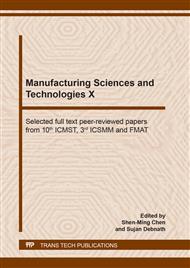p.70
p.77
p.85
p.91
p.97
p.103
p.111
p.117
p.122
Eco-Friendly Thermal Insulation Structures Based on Natural and Biodegradable Materials for Environmentally Durable Development
Abstract:
Worldwide, natural fiber insulation is in high demand, offering not only thermal comfort but also soundproofing. Another important aspect for which these biodegradable materials is popular is that it presents no health risk. Due the soft texture, natural fibers can be introduced very simply in any type of construction. Regardless of the vertical or inclined mounting, the stapling or gluing of the material gives stability. For example, the wool insulation is made from natural fibers, washed and treated. These wool fibers are held together either mechanically or using up to 12% polyester fibers to form semi-rigid tiles/mattresses or rollers. With a higher price than mineral wool, natural insulation is ideal for eco-friendly wooden houses. Depending on the type of construction, the wool can be mounted in a single layer or several layers, of different thicknesses [1]. For the evaluation of the thermal efficiency of the wool panel’s insulation four variants of insulating panels based on 100% wool were accomplished. Using a specialized simulation program, it is found that the heat losses through the walls themselves represent 86% of the total heat loss and the heat losses through the windows/doors to the outside represent 14% of the total heat losses.
Info:
Periodical:
Pages:
97-102
Citation:
Online since:
June 2020
Authors:
Price:
Сopyright:
© 2020 Trans Tech Publications Ltd. All Rights Reserved
Share:
Citation:


